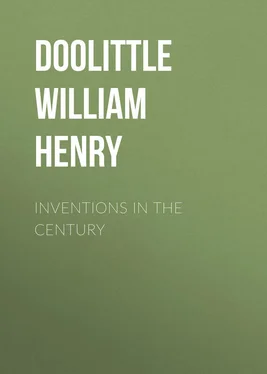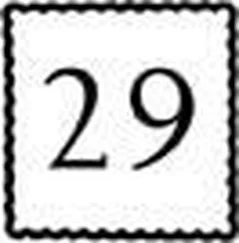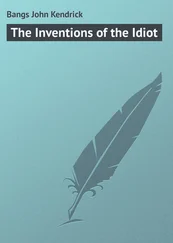William Doolittle - Inventions in the Century
Здесь есть возможность читать онлайн «William Doolittle - Inventions in the Century» — ознакомительный отрывок электронной книги совершенно бесплатно, а после прочтения отрывка купить полную версию. В некоторых случаях можно слушать аудио, скачать через торрент в формате fb2 и присутствует краткое содержание. Жанр: foreign_antique, foreign_prose, на английском языке. Описание произведения, (предисловие) а так же отзывы посетителей доступны на портале библиотеки ЛибКат.
- Название:Inventions in the Century
- Автор:
- Жанр:
- Год:неизвестен
- ISBN:нет данных
- Рейтинг книги:5 / 5. Голосов: 1
-
Избранное:Добавить в избранное
- Отзывы:
-
Ваша оценка:
- 100
- 1
- 2
- 3
- 4
- 5
Inventions in the Century: краткое содержание, описание и аннотация
Предлагаем к чтению аннотацию, описание, краткое содержание или предисловие (зависит от того, что написал сам автор книги «Inventions in the Century»). Если вы не нашли необходимую информацию о книге — напишите в комментариях, мы постараемся отыскать её.
Inventions in the Century — читать онлайн ознакомительный отрывок
Ниже представлен текст книги, разбитый по страницам. Система сохранения места последней прочитанной страницы, позволяет с удобством читать онлайн бесплатно книгу «Inventions in the Century», без необходимости каждый раз заново искать на чём Вы остановились. Поставьте закладку, и сможете в любой момент перейти на страницу, на которой закончили чтение.
Интервал:
Закладка:
CHAPTER IV.
AGRICULTURAL INVENTIONS
If the farmer, toward the close of the 18th century, tired with the sickle and the scythe for cutting his grass and grain, had looked about for more expeditious means, he would have found nothing better for cutting his grass; and for harvesting his grain he would have been referred to a machine that had existed since the beginning of the Christian era. This machine was described by Pliny, writing about A. D. 60, who says that it was used on the plains of Rhætia. The same machine was described by Palladius in the fourth century. That machine is substantially the machine that is used to-day for cutting and gathering clover heads to obtain the seed. It is now called a header.
A machine that has been in use for eighteen centuries deserves to be described, and its inventor remembered; but the name of the inventor has been lost in oblivion. The description of Palladius is as follows:
"In the plains of Gaul, they use this quick way of reaping, and without reapers cut large fields with an ox in one day. For this purpose a machine is made carried upon two wheels; the square surface has boards erected at the side, which, sloping outward, make a wider space above. The board on the fore part is lower than the others. Upon it there are a great many small teeth, wide set in a row, answering to the height of the ears of corn (wheat), and turned upward at the ends. On the back part of the machine two short shafts are fixed like the poles of a litter; to these an ox is yoked, with his head to the machine, and the yoke and traces likewise turned the contrary way. When the machine is pushed through the standing corn all the ears are comprehended by the teeth and cut off by them from the straw and drop into the machine. The driver sets it higher or lower as he finds it necessary. By a few goings and returnings the whole field is reaped. This machine does very well in plain and smooth fields."
As late as 1786 improvements were being attempted in England on this old Gallic machine. At that time Pitt, in that country, arranged a cylinder with combs or ripples which tore off the heads of the grain-stalks and discharged them into a box on the machine. From that date until 1800 followed attempts to make a cutting apparatus consisting of blades on a revolving cylinder rotated by the rotary motion of the wheels on which the machine was carried.
In 1794, a Scotchman invented the grain cradle. Above the blade of a scythe were arranged a set of fingers projecting from a post in the scythe snath. This was considered a wonderful implement. A report of a Scottish Highland Agricultural Society about that time said of this new machine:
"With a common sickle, seven men in ten hours reaped one and one-half acres of wheat, – about one-quarter of an acre each. With the new machine a man can cut one and one-half acres in ten hours, to be raked, bound, and stacked by two others."
It was with such crude and imperfect inventions that the farmers faced the grain and grass fields of the nineteenth century.
The Seven Wonders of the ancient world have often been compared with the wonders of invention of this present day.
Senator Platt in an address at the Patent Centennial Celebration in Washington, in 1891, made such a contrast:
"The old wonders of the world were the Pyramids, the Hanging Gardens of Babylon, the Phidian statue of Jupiter, the Mausoleum, the Temple of Diana at Ephesus, the Colossus of Rhodes, and the Pharos of Alexandria. Two were tombs of kings, one was the playground of a petted queen, one was the habitat of the world's darkest superstition, one the shrine of a heathen god, another was a crude attempt to produce a work of art solely to excite wonder, and one only, the lighthouse at Alexandria, was of the slightest benefit to mankind. They were created mainly by tyrants; most of them by the unrequited toil of degraded and enslaved labourers. In them was neither improvement nor advancement for the people." With some excess of patriotic pride, he contrasts these with what he calls "the seven wonders of American invention." They were the cotton-gin; the adaptation of steam to methods of transportation; the application of electricity to business pursuits; the harvester; the modern printing-press; the ocean cable; and the sewing machine. "How wonderful," he adds, "in conception, in construction, in purpose, these great inventions are; how they dwarf the Pyramids and all the wonders of antiquity; what a train of blessings each brought with its entrance into social life; how wide, direct and far-reaching their benefits. Each was the herald of a social revolution; each was a human benefactor; each was a new Goddess of Liberty; each was a great Emancipator of man from the bondage of labour; each was a new teacher come upon earth; each was a moral force."
Of these seven wonders, the harvester and the cotton-gin will only be described in this chapter. "Harvester" has sometimes been used as a broad term to cover both mowers and reapers. In a recent and more restricted sense, it is applied to a machine that cuts grain, separates it into gavels, and binds it.
The difficulty that confronted the invention of mowers was the construction, location and operation of the cutting part. To convert the scythe or the sickle, or some other sharp blade into a fast reciprocating cutter, to hang such cutter low so that it would cut near the ground, to protect it from contact with stones by a proper guard, to actuate it by the wheels of the vehicle, to hinge the cutter-bar to the frame so that its outer end might be raised, and to arrange a seat on the machine so that the driver could control the operating parts by means of a lever, or handles, were the main problems to be solved.
In 1799, Boyce, of England, had a vertical shaft with six rotating scythes beneath the frame of the implement. This died with the century.
In 1800, Meares, his countryman, tried to adapt shears. He was followed there, in 1805, by Plucknett, who introduced a horizontal, rotating, circular blade. Others, subsequently, adopted this idea, both in England and America. It had been customary, as in olden times, to push the apparatus forward by a horse or horses hitched behind. But, in 1806, Gladstone had patented a front draft machine, with a revolving wheel armed with knife-blades cutting at one side of the machine and a segment-bar with fingers which gathered the grain and held the straw while the knife cut it.
Then, in 1807, Salonen introduced vibrating knifes over stationary blades, fingers to gather grain to the cutters, and a rake to carry the grain off to one side.
In 1822, Ogle, also of England, was the first to invent the reciprocating knife-bar. This is the movement that has been given in all the successful machines since. Ogle's was a crude machine, but it furnished the ideas of projecting the cutter-bar at the side of a reel to gather the grain to the cutter and of a grain platform which was tilted to drop the sheaf.
The world is indebted also to the Rev. Patrick Bell, of Scotland, who had invented and built as early as 1823-26, a machine which would cut an acre of grain in an hour, and is thus described by Knight:
"The machine had a square frame on two wheels which ran loose on the axle, except when clutched thereto to give motion to the cutters. The cutter-bar had fixed triangular cutters between each of which was a movable vibrating cutter, which made a shear cut against the edge of the stationary cutter, on each side. It had a reel with twelve vanes to press the grain toward the cutters, and cause it to fall upon a travelling apron which carried away cut grain and deposited it at the side of the machine. The reel was driven by bevel-gearing."
It was used but a few years and then revived again at the World's Fair in London, in 1851.
Читать дальшеИнтервал:
Закладка:
Похожие книги на «Inventions in the Century»
Представляем Вашему вниманию похожие книги на «Inventions in the Century» списком для выбора. Мы отобрали схожую по названию и смыслу литературу в надежде предоставить читателям больше вариантов отыскать новые, интересные, ещё непрочитанные произведения.
Обсуждение, отзывы о книге «Inventions in the Century» и просто собственные мнения читателей. Оставьте ваши комментарии, напишите, что Вы думаете о произведении, его смысле или главных героях. Укажите что конкретно понравилось, а что нет, и почему Вы так считаете.












